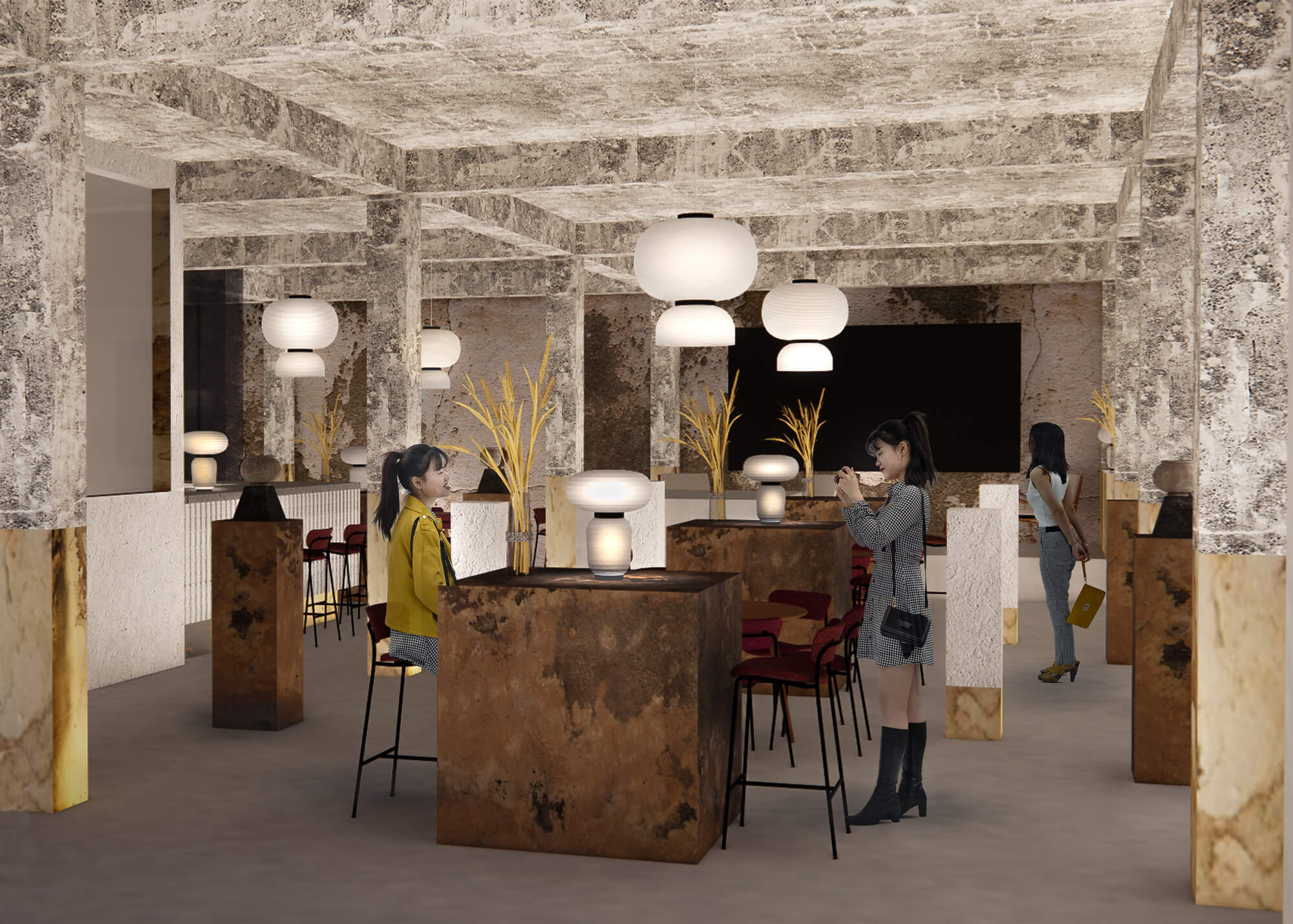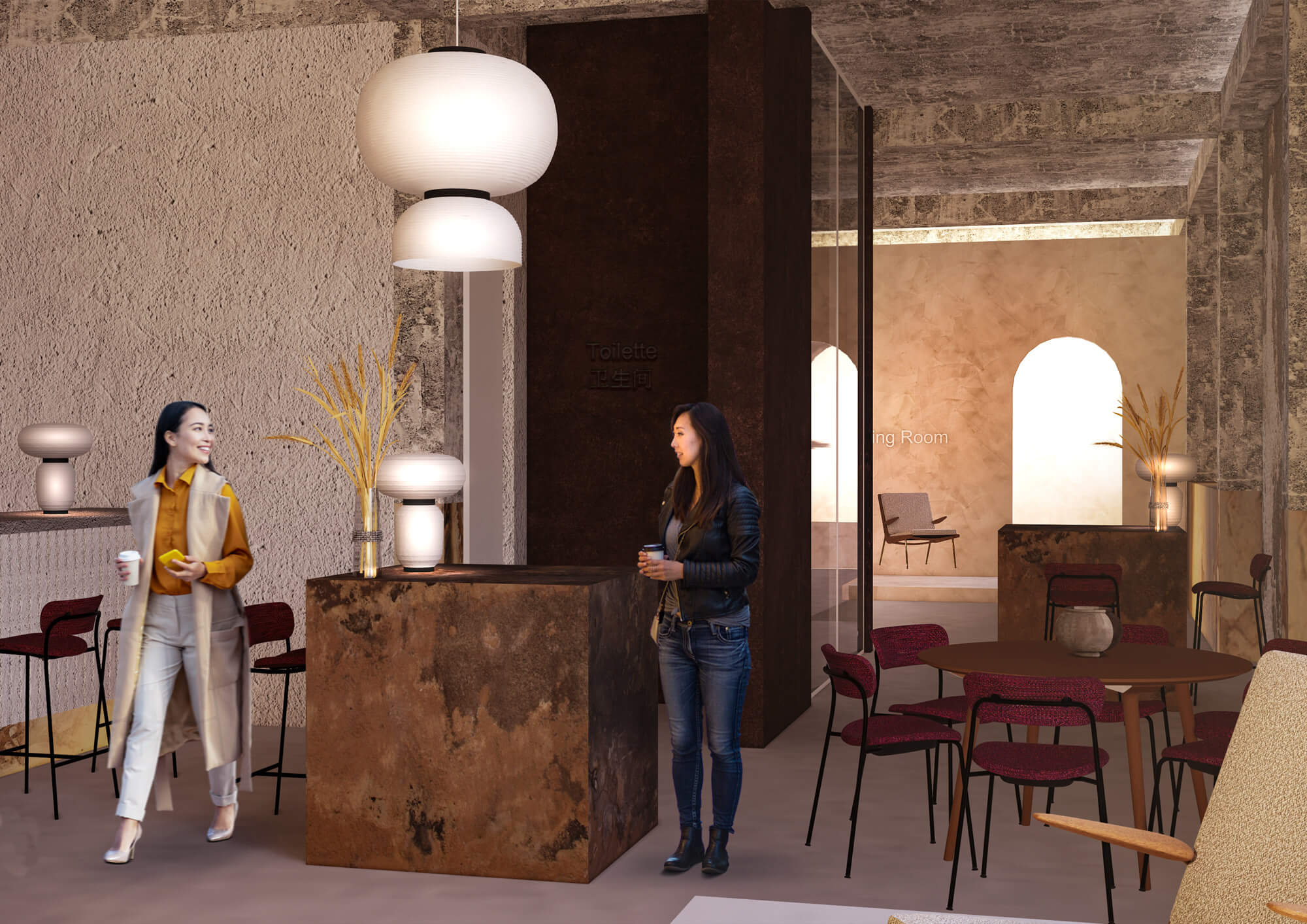Reclothing bank
What should be the role of the physical shop in the digital era?
This research explores how service and interior design could transform the role of the physical store in the digital era through a renewal of its aesthetic characteristics and the service it offers.
The definition of a business model based on an omnichannel retail system would use the customer-centric approach (over the products-centric of nowadays retail experience) as the new physical store experience’s main feature.
Indeed, the goal is to redefine the value and the role of the in-store experience through touchpoints connected to online platforms and through the creation of stimulating and exciting interior environments.
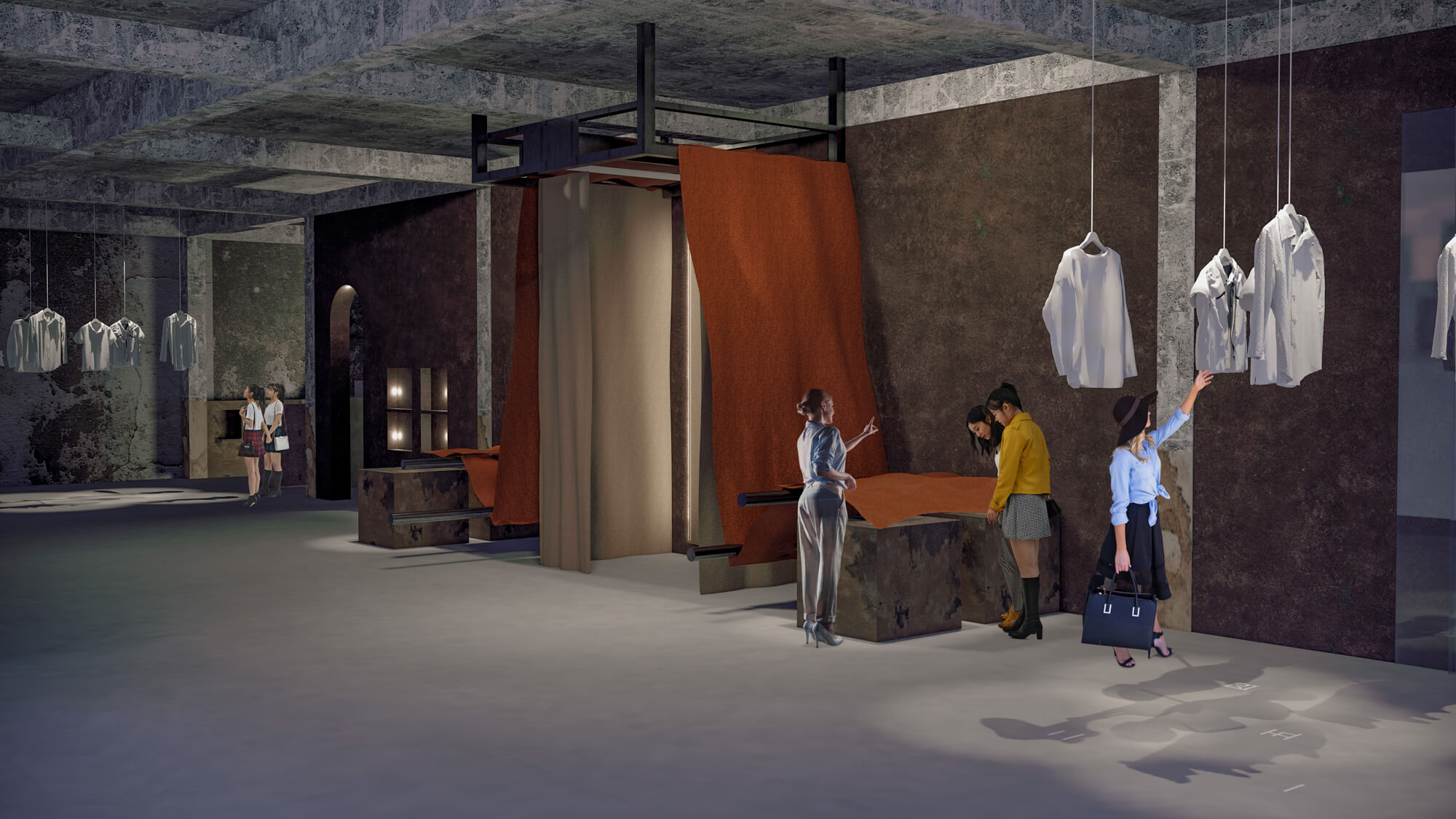

Encounters and connection
The physical store should be a place for encounters and connections on multiple levels (brand and consumer; brand and values; consumer and products; brand community and the single consumer, etc.)
Moreover, the environment shuld put the consumer at the center to transmit values and elements usually given for granted.
The transmission of values is possible through the user’s education to purchase, more aware, and more specific to their needs. Only in this way will the users understand, learn by doing, touching, through information given by experts, workshops, conferences, and exhibitions. The shop is, therefore, to be considered a hub, a multifunctional center able to satisfy multiple activities.
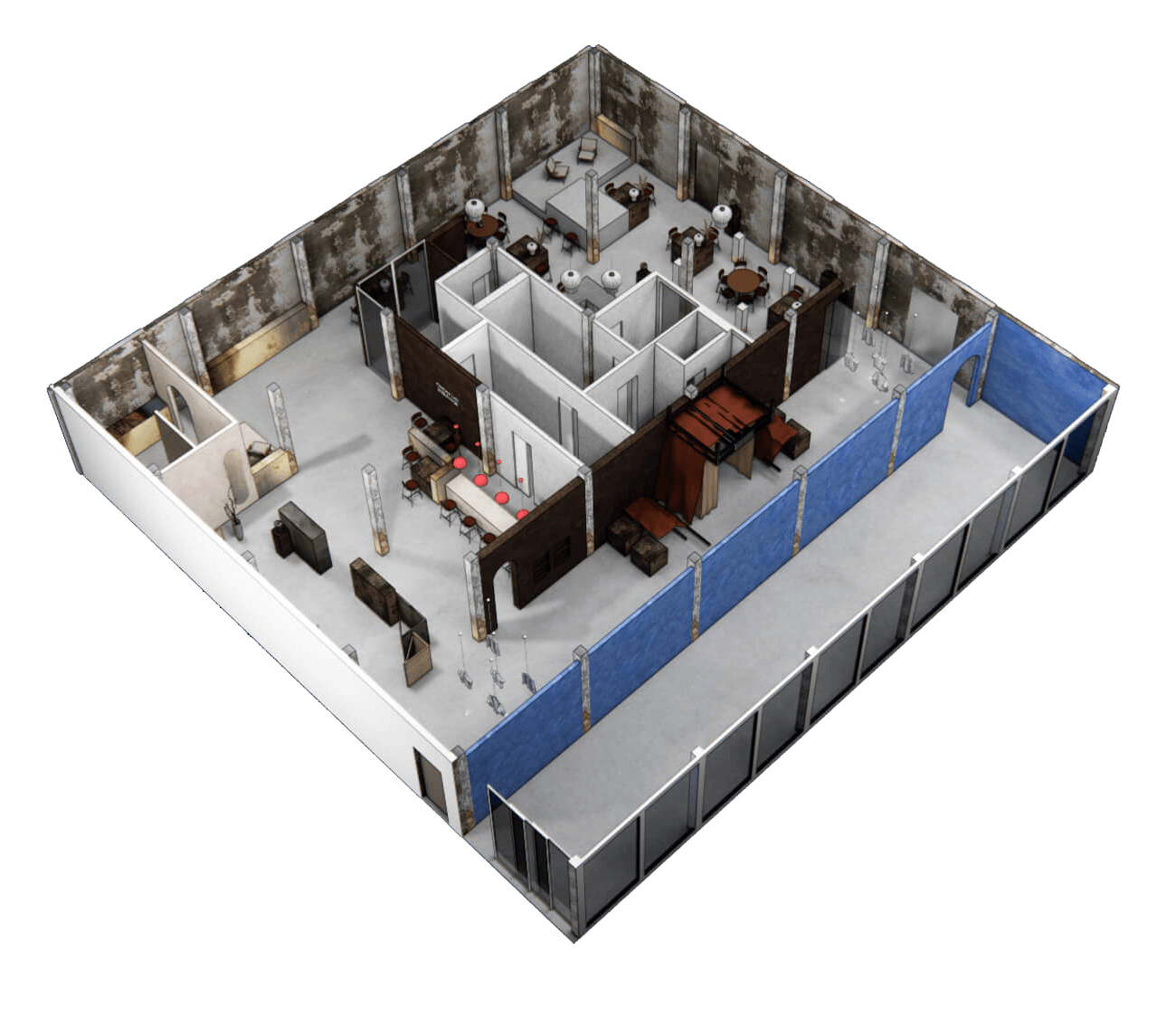
Encounters and connection
The physical store should be a place for encounters and connections on multiple levels (brand and consumer; brand and values; consumer and products; brand community and the single consumer, etc.)
Moreover, the environment shuld put the consumer at the center to transmit values and elements usually given for granted.
The transmission of values is possible through the user’s education to purchase, more aware, and more specific to their needs. Only in this way will the users understand, learn by doing, touching, through information given by experts, workshops, conferences, and exhibitions. The shop is, therefore, to be considered a hub, a multifunctional center able to satisfy multiple activities.
Functions:
– educational /exhibition spot
– textiles area
– clothes lab
– sterilization area
– dyework for fabrics
– clothes storage
– selling area
– fitting rooms
– toilette (separate for staff and customers)
– in-store bar (also for workshops and lectures)
Reclothing Bank
Reclothing bank is an online-only brand based in Shanghai. It is an inclusive brand that caters to a young and conscious audience. It has strong intrinsic values that want to make a difference in fashion, which is too fast and has too high an environmental impact. Thus, the service that I thought of matures from the brand’s basic concepts, creating clothes from old and used materials or garments. In particular, it is possible to divide the service into three parts:
A. Co-creation phase
The first phase, let’s call it co-creation, starts in the textiles area. The user will find himself in front of white garments belonging to the “basic” collection displayed in that place. Starting from the conformation of these garments, which will have to be formed mainly by combining several fabrics and materials, the user will choose some of the proposed materials, deriving both from luxury brand leftover and experimental fabrics of the brand itself. Once the user has selected them, thanks to the expert staff’s help in the area, he will personalize his exclusive garment by collaborating with a designer. In fact, except for the brand’s experimental materials, the waste fabrics are limited, as they come from different stores and brands. The chosen garment co-creation can be made according to standard sizes (S, M, L, XL) or made to measure. The customer and the designer will decide how best to use the chosen fabrics to create a unique garment suitable for the consumer’s needs.
B. Purchase phase
The customization of garments can originate online, but customers will not access some exclusive fabrics from luxury brands, which donate their leftovers to “Reclothing bank.” Once the garment is ready, the user can decide whether to buy it or rent it for a maximum of two months. At the end of this period, the user can decide if to purchase the garment permanently or donate it to the brand that will reuse the parts after sterilization. The third possibility for the customer is to go back to the store and recreate another product from that same garment.
C. Recreation phase
If phase B ends with a user’s choice to bring the garment back to the store and recreate another one (even different, e.g., from a jacket to pants), there will be another co-creation with the designer and the seamstresses. The new garment will then use the fabrics and materials of the previous one plus additional elements. In this way, besides returning to the store (where it will be probable to discover new textiles produced by the brand and select other fabrics), the user will actively and concisely limit waste. The customer can participate by consciously consuming on reducing the environmental impact of production, typical of a system with these rhythms. In this way, the experience will generate a more conscious and circular approach.
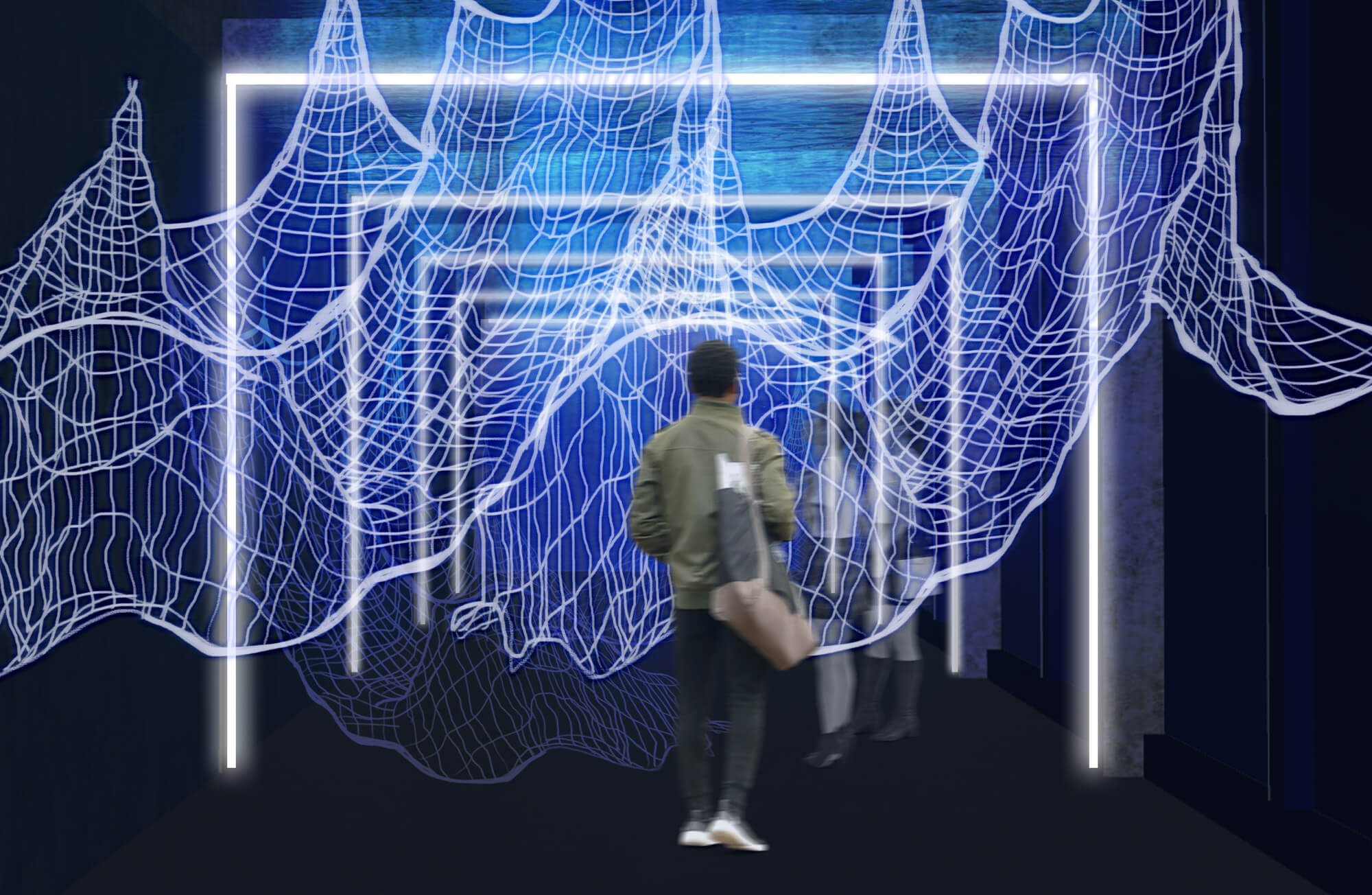
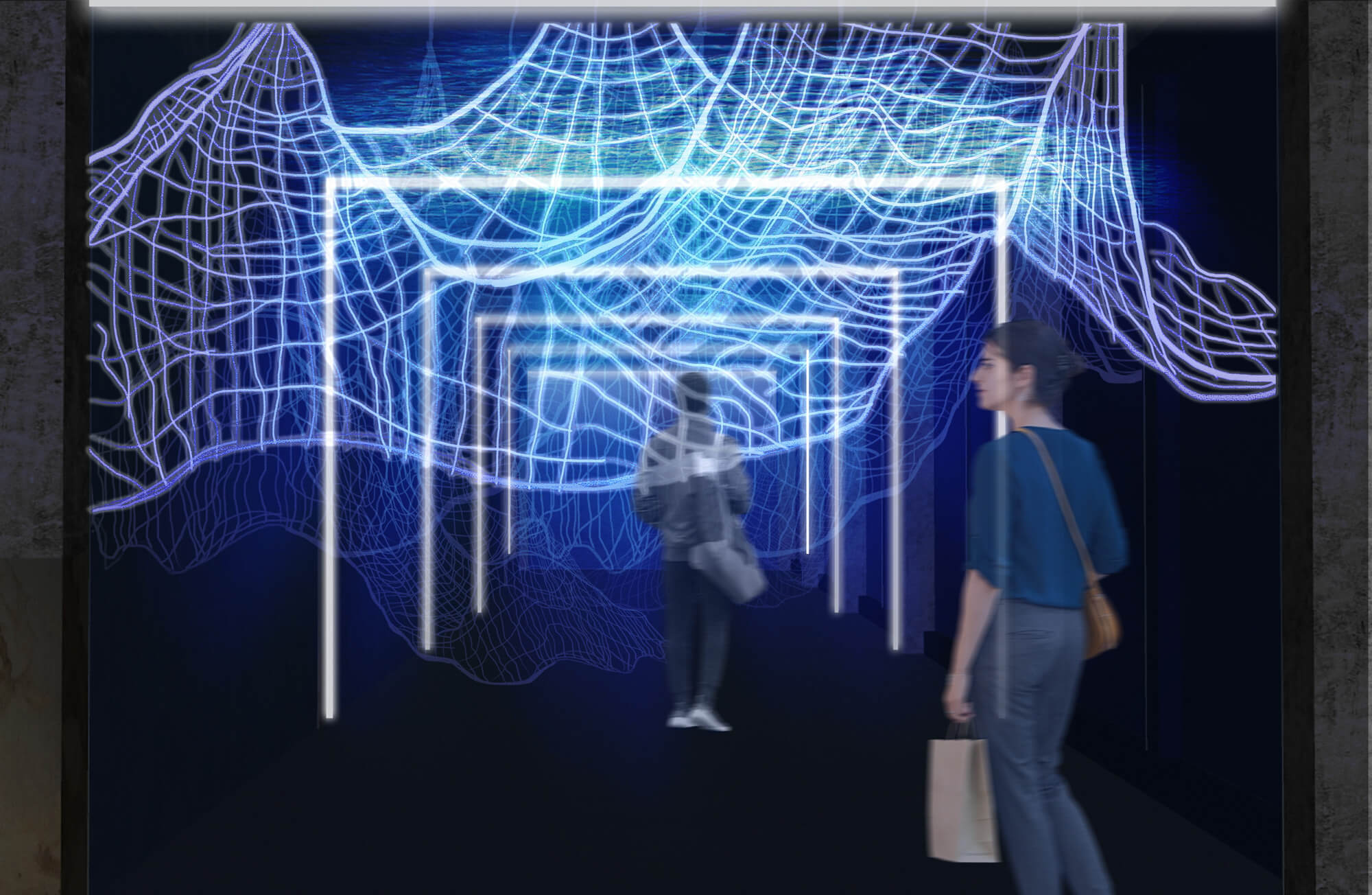
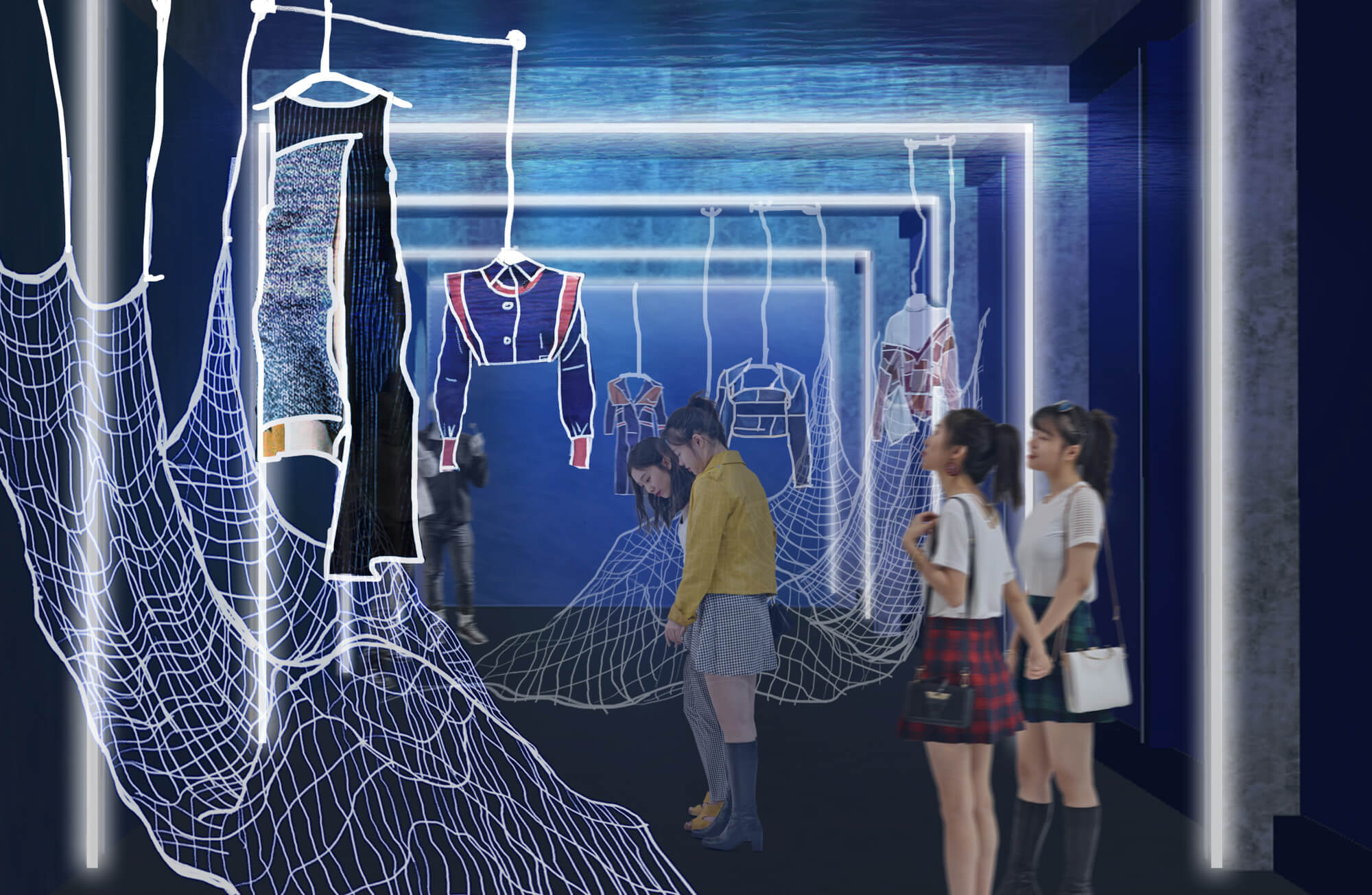
Educational | Exhibition spot
This space, located at the store entrance, has a dual function: to educate and exhibit. Taking the network in a figurative sense, it is a set of people whose connection allows them to perform collaboration, cooperation, or observation, aimed at the same end. Starting from the web concept, both metaphorically and literally, the visitor’s journey to discover the brand and its values begin through this space. This space changes exhibitions quite often, according to the events and workshops present in the other rooms.
During the interview with “Reclothing bank,” it emerged that they recycle nylon from nets in one of the collections they recover from the seabed. Through this nylon, the clothes are born: for this reason, in the second part of the exhibition, the thread of the net shows itself as a generating element of the “ready to wear” creative collection, literally becoming what holds up the clothes in the display.
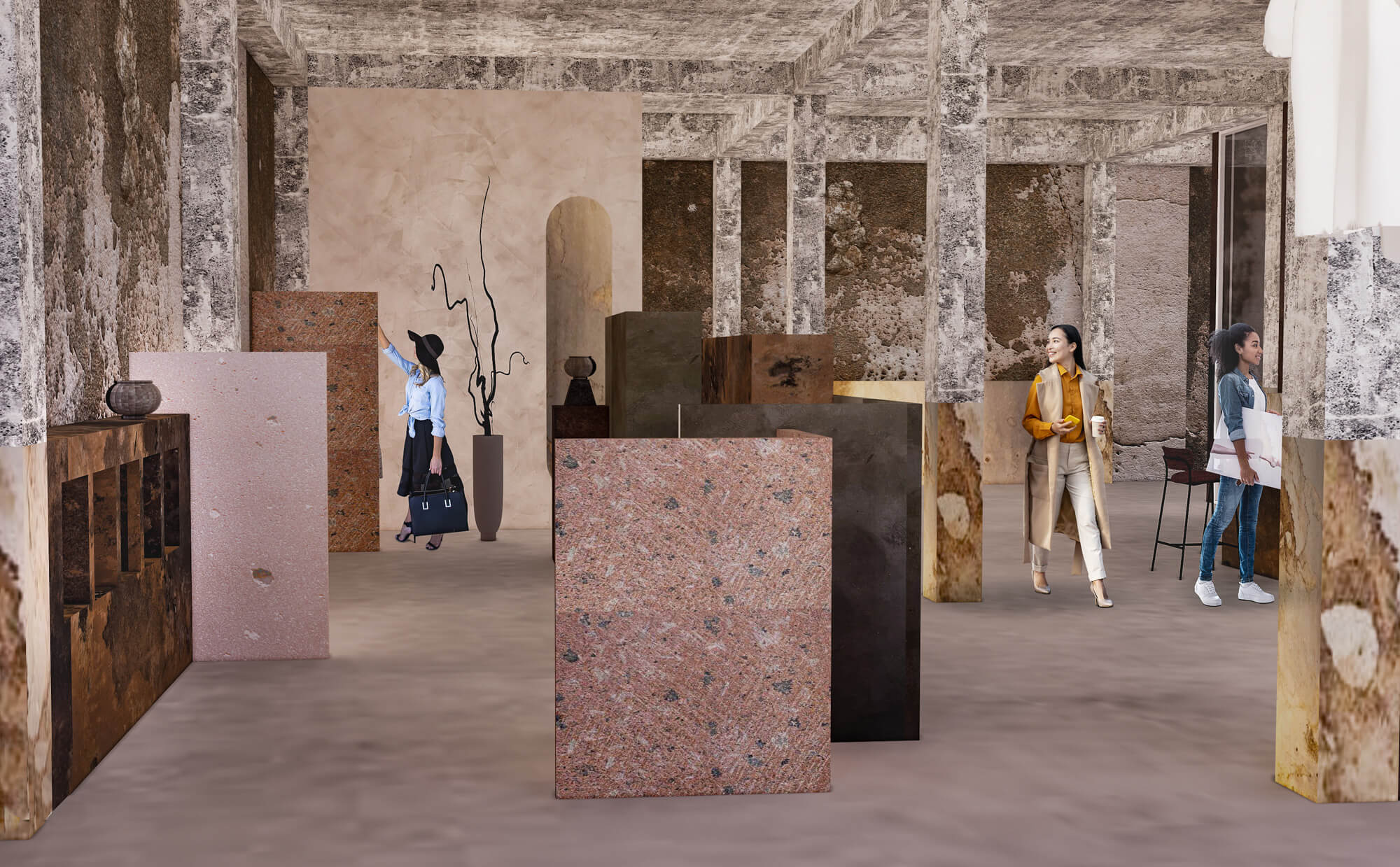
In this area, there are clothes on display that people can buy already as they are. They are accessories and clothes belonging to various collections, depending on the availability of the moment. The selected items are few, giving more value to the heterogeneity that can adequately express all the brand collections. Moreover, by framing the QR code on the garment label, it is possible to see models related to the collection, select new ones, and order everything from the online platform. The space is appointed with block compositions, almost as if to hide the fact that they are displays for clothes and accessories. Indeed, the focus is on the exhibitors’ materials, also recycled or created from organic elements.
The bar and relax area represent another decisive function inside the store. The section also serves as a place for interactions between consumers and the brand, and its community. The site itself is multifunctional. In addition to being a more traditional bar, where there will always be attention for ingredients (in favor of local producers), it is also a space that will host events and conferences.
–
All the materials used for the project are either from organic sources, recycled, or can be recycled. The aesthetic wants to respect the already existing architecture, highlighting it.
